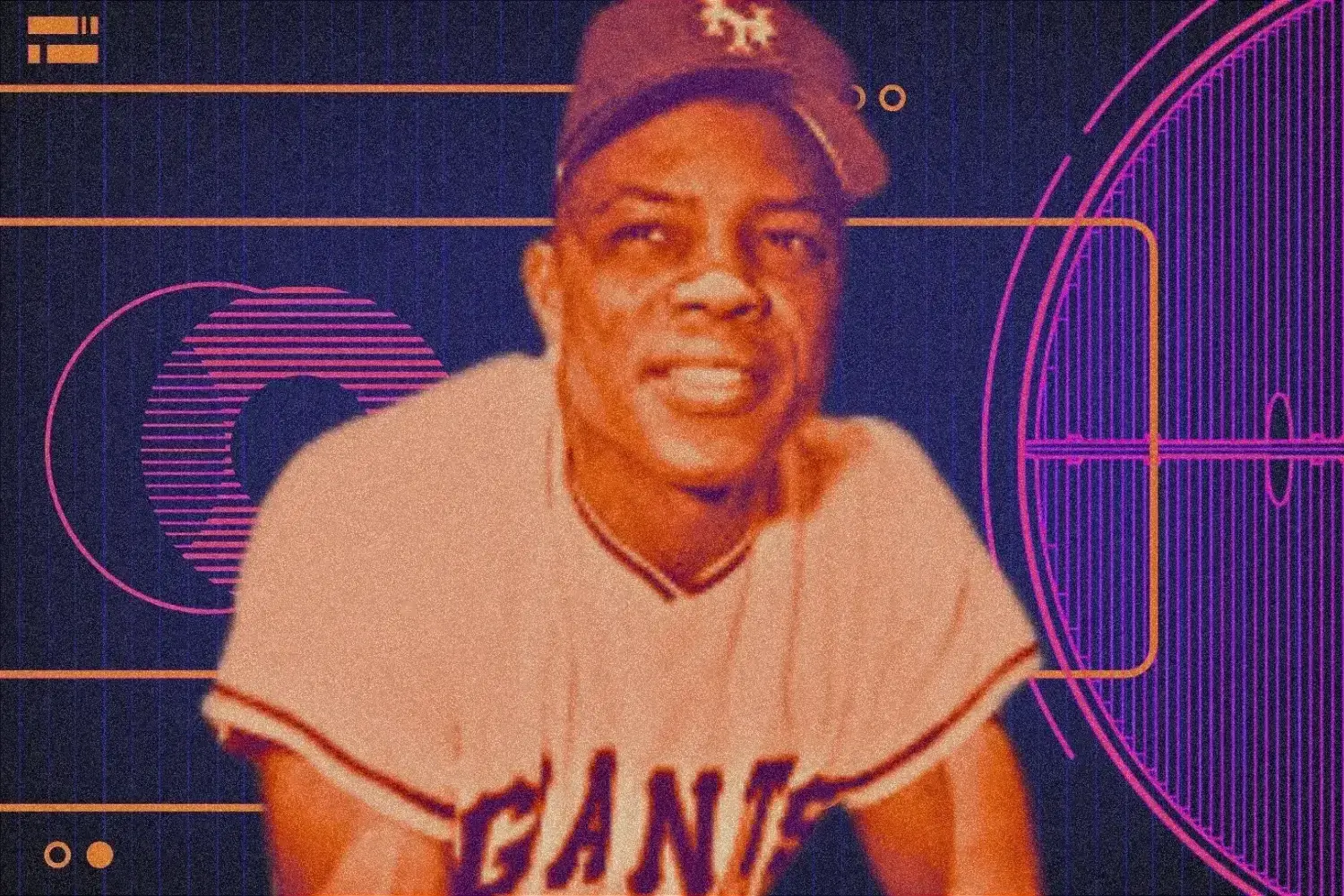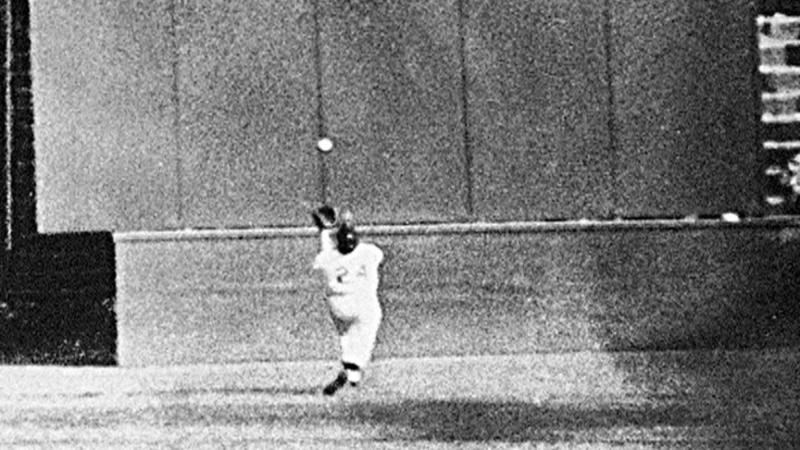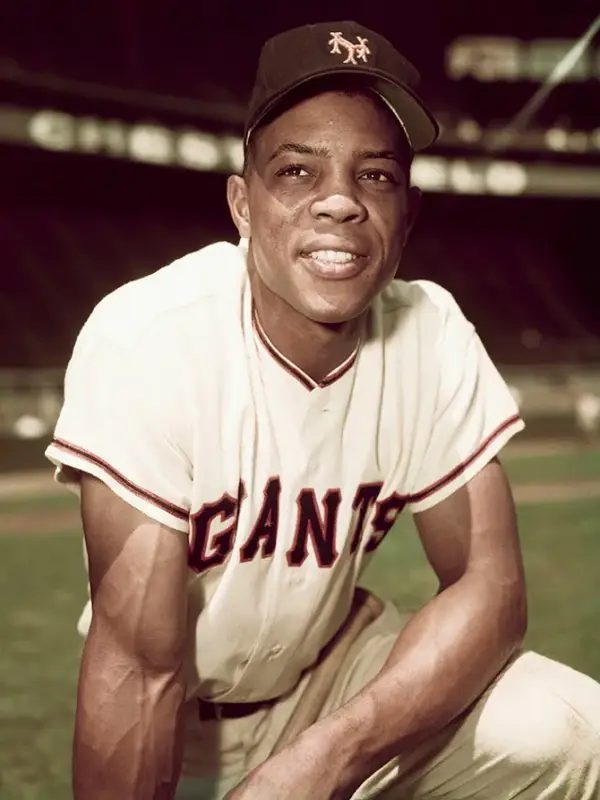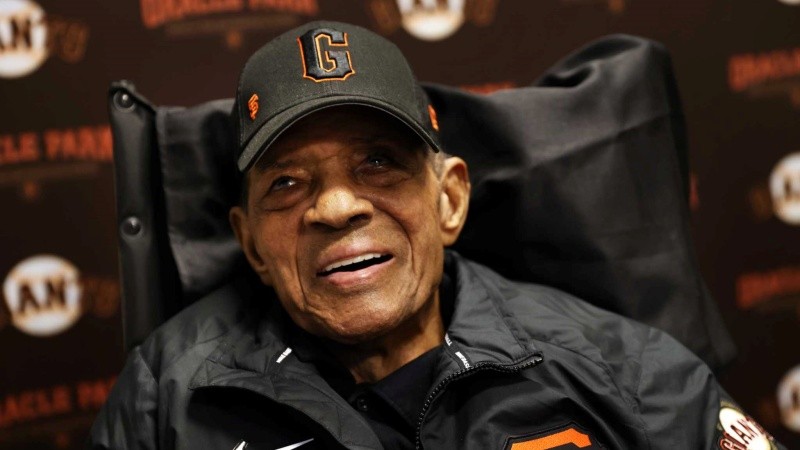Say Hey: Willie Mays and His Unparalleled Legacy
Discover the unparalleled legacy of Willie Mays, a baseball icon celebrated for his extraordinary talent, historic milestones, and impact on the sport and culture.
Jul 15, 2024

As many in the baseball community continue to reflect on the life of Willie Mays, whom the baseball world lost on June 18, we must remember that his legacy extends far beyond the baseball diamond. Born on May 6, 1931, in Westfield, Alabama, Mays's MLB career spanned over two decades, from 1951 to 1973. His impact on the game is immeasurable, characterized by his exceptional talent, versatility, and charisma.
It would not be out of turn to call Mays a legend in the sports world. It’s fitting to say Willie Mays is the best baseball player ever. Here, we will discuss the career and legacy of Mays and provide context as to why Willie Mays will go down as the best of the best.
Early Life and Introduction to Baseball
Willie Howard Mays Jr. grew up in a sports-oriented family. His father, William Howard Mays Sr., was a semi-professional baseball player, and his mother, Annie Satterwhite, was an accomplished sprinter. Mays's athletic prowess was evident from a young age.
Mays attended Fairfield Industrial High School, where he excelled in multiple sports, including football, basketball, and baseball. He was a standout quarterback on the football team and a star basketball guard, but baseball was where he truly shone. His versatility and skill in all three sports earned him widespread recognition in his community.
While still in high school, Mays began playing semi-professional baseball during the summers. At 16, he joined the Birmingham Black Barons of the Negro American League. Despite his youth, Mays quickly made a name for himself as an exceptional outfielder and hitter.
The Negro Leagues were home to some of the most extraordinary talents in baseball, and competing at this level helped Mays hone his skills and build his confidence. He played alongside and against legendary players, learning from their experience and benefiting from their mentorship.
Mays's performance with the Birmingham Black Barons did not go unnoticed. Major League scouts were impressed by the young outfielder's abilities. In 1950, the New York Giants' Wid Matthews scouted Mays. Matthews was immediately struck by Mays's combination of speed, power, and defensive prowess.
1950, the New York Giants signed Willie Mays to a minor league contract. Mays's transition to the minor leagues was seamless. He continued to excel, quickly moving up the ranks. His performance in Trenton was stellar, earning him a promotion to the Minneapolis Millers, the Giants' Class AAA affiliate. It would not be long before Mays played on a major league field.

Major League Debut and Early Career
Willie Mays made his Major League Baseball debut on May 25, 1951, with the New York Giants. His arrival in the majors was greatly anticipated due to his exceptional performance in the minor leagues. However, Mays's transition to the big leagues was initially challenging. He went hitless in his first 12 at-bats. That slow start might have shaken any player's confidence, but not Mays. On May 28, 1951, he hit his first major league home run off Hall of Famer Warren Spahn of the Boston Braves, marking the beginning of an extraordinary career.
Despite his slow start, Mays quickly adapted to the major league level, showcasing remarkable talent and versatility. His rookie season was a testament to his potential, as he finished the year with a .274 batting average, 20 home runs, and 68 RBIs. His performance earned him the National League Rookie of the Year Award.
Willie Mays's early career is perhaps best encapsulated by his performance in the 1954 season, which culminated in the Giants' World Series victory over the Cleveland Indians. That year, Mays led the majors with a .345 batting average, 41 home runs, and 110 RBIs, earning him the National League Most Valuable Player (MVP) Award.
The defining moment of Mays's career, and one of the most famous plays in baseball history, occurred during Game 1 of the 1954 World Series. With the score tied 2-2 in the eighth inning and runners on first and second, Cleveland's Vic Wertz hit a deep fly ball to center field. Mays, playing at the Polo Grounds with its notoriously deep center field, sprinted towards the wall and made an over-the-shoulder catch at full speed, preserving the tie and preventing the Indians from taking the lead.
This play, simply known as "The Catch," epitomized Mays's extraordinary defensive abilities and flair for the dramatic. It remains one of the most celebrated moments in baseball history, symbolizing Mays's all-around excellence and ability to perform under pressure.
Willie Mays's major league debut and early career set the stage for a legendary journey in baseball. From his initial struggles to his triumphant moments, Mays inspired fans and players alike.

The 1950s and 1960s: The Era of Mays
The 1950s
Overall, the 1950s marked Willie Mays's transformation from a promising young talent into a dominant force in Major League Baseball. After his breakout rookie season in 1951 and his pivotal role in the 1954 World Series, Mays continued to elevate his game, solidifying his status as one of the premier players in the league.
In 1955, Mays had a remarkable season, hitting 51 home runs and becoming the youngest player to achieve that milestone. He also batted .319 with 127 RBIs and led the league in triples with 13. Mays's power-hitting capabilities and ability to produce offensively in multiple ways were clear. His 51 home runs that year earned him the National League home run title, the first of four he would win in his career.
Mays's performance throughout the 1950s earned him numerous accolades and solidified his place among baseball's elite. First selected to the All-Star Game in 1954, he continued earning All-Star honors yearly throughout the decade. His consistency and excellence on offense and defense made him a perennial All-Star and a fan favorite.
One of Mays's career highlights during this period was his rivalry with contemporaries such as Mickey Mantle and Duke Snider. The comparisons between Mays, Mantle, and Snider — three of the best center fielders of their era — fueled debates among fans and sportswriters. Mays's all-around skills and charismatic personality often placed him at the forefront of these discussions.
In 1958, the New York Giants relocated to San Francisco, marking a significant change for the franchise and Mays. The move to the West Coast presented new opportunities and challenges. Mays quickly became the face of the San Francisco Giants, endearing himself to a new fan base with his electrifying play and engaging personality.
Mays's impact on the field remained as potent as ever. In 1958, his first season in San Francisco, he led the National League in runs scored with 121 and continued providing stellar centerfield defense. His ability to adapt to the new environment and maintain his high performance was a testament to his resilience and talent.
The 1960s
The 1960s were arguably the peak of Willie Mays's career as he set records and achieved new milestones. This decade was truly when Mays cemented his legacy as one of the greatest players in baseball history.
In 1962, Mays had one of his best seasons, hitting 49 home runs, driving in 141 runs, and batting .304. His performance helped the Giants win the National League pennant and advance to the World Series, where they faced the New York Yankees. Although the Giants ultimately lost the series in seven games, Mays's contributions were critical to their success throughout the season.
His base-stealing prowess further highlighted Mays's versatility. In 1956, he led the National League with 40 stolen bases, showcasing his speed and intelligence on the basepaths. Throughout the 1960s, he continued to be a threat on the bases, stealing 23 or more bases in six seasons during the decade.
One of the standout years of Mays's career was 1965, when he won his second National League MVP Award. That season, he hit a career-high 52 home runs, batted .317, and drove in 112 runs. His usual stellar defense complemented his remarkable power-hitting as he continued to make highlight-reel plays in the outfield.
Mays's 52 home runs in 1965 were particularly significant because they set a new National League record for right-handed batters. His ability to hit for power while maintaining a high batting average was a rare combination that made him one of the most feared hitters in the league.
By the end of his career, Mays accumulated historic stats and milestones. More importantly, he solidified his standing as the greatest five-tool player ever. Someone with exceptional power, hitting, speed, fielding, and throwing abilities.

Career Milestones
To truly understand Mays’s standing as the greatest player of all time, it’s important to understand the milestones that make him stand out from his peers.
600th Home Run
One of the most significant milestones in Willie Mays's illustrious career was hitting his 600th home run. On September 22, 1969, Mays achieved this historic feat against the San Diego Padres at San Diego Stadium. This home run made him only the third player in Major League Baseball history to reach 600 home runs, joining Babe Ruth and Hank Aaron in this exclusive club. The moment was a testament to Mays's extraordinary power and consistency as a hitter, and it further cemented his place among the all-time greats.
3,000th Hit
On July 18, 1970, Mays collected his 3,000th hit against the Montreal Expos at Candlestick Park. This achievement made him the 10th player in MLB history to reach 3,000 hits, highlighting his longevity and sustained excellence at the plate. His ability to combine power with consistent hitting made him one of the most well-rounded offensive players in baseball history.
660th Home Run
Mays's career home run total eventually reached 660, a remarkable achievement that stood as the third-highest in MLB history for many years. His final career home run came on August 17, 1973, while playing for the New York Mets. Mays's 660 home runs reflect his incredible power and ability to maintain a high level of performance over two decades. A few players have since surpassed his home run total, but it remains a significant milestone in the sport's history.
24 All-Star Selections
One of the most impressive aspects of Mays's career was his consistent excellence, as evidenced by his 24 All-Star Game selections. From 1954 to 1973, Mays was named an All-Star yearly, a testament to his sustained dominance and popularity. This streak of All-Star appearances is one of the longest in baseball history. It underscores Mays's status as one of the game's premier talents for nearly two decades. His performances in All-Star Games were often memorable, showcasing his skills on a national stage.
Gold Glove Awards
Willie Mays's defensive prowess was recognized with 12 consecutive Gold Glove Awards from 1957 to 1968. The Gold Glove goes to the best defensive players at each position, and Mays's string of wins reflects his unparalleled abilities in center field. His speed, agility, and powerful throwing arm made him a defensive standout. Mays's ability to make difficult catches look routine and his knack for positioning himself perfectly were hallmarks of his defensive game. These Gold Glove Awards are a testament to his impact on defense, which was as significant as his contributions at the plate.
MVP Awards
Mays's excellence was recognized with two National League MVP Awards. His first came in 1954 when he led the Giants to a World Series victory and made "The Catch." His second MVP Award came in 1965 when he hit a career-high 52 home runs and drove in 112 runs. These MVP Awards highlight Mays's ability to be the best player in the league in multiple seasons, achieving dominance in different phases of his career.
Legacy and Impact
Willie Mays's legacy in baseball is profound and multifaceted. Mays's reputation as a complete player wasn’t the only way he impacted the game.
One of the defining aspects of Mays's legacy is his impact on future generations of players. Mays's style of play, characterized by his exuberance and joy for the game, inspired countless young athletes. His influence extended beyond his statistics, as he symbolized excellence and sportsmanship.
In recognition of his contributions to baseball, Mays was inducted into the Baseball Hall of Fame in 1979, his first year of eligibility. Unsurprisingly, his Hall of Fame plaque describes him as "arguably the most complete player in history," a fitting tribute to his remarkable career.
Willie Mays's impact extended beyond the baseball field. As an African-American player who achieved greatness during an era of segregation and the Civil Rights Movement, Mays played a significant role in advancing the cause of racial equality in sports. His success challenged racial stereotypes and opened doors for future African-American athletes. He was among the first African-American athletes to receive widespread endorsement deals, and his image appeared in numerous advertisements. Mays's presence in mainstream media helped to normalize the inclusion of African-American athletes in the broader cultural landscape.
After retiring from baseball, Willie Mays remained active in the sport and community. He coached and mentored young players, sharing his knowledge and experience with the next generation. Mays also worked as a special assistant to the San Francisco Giants, continuing his long-standing association with the team.
Mays's philanthropic efforts have had a lasting impact. He established the Say Hey! Foundation, which provides educational opportunities and support for underprivileged youth. Through his foundation, Mays has helped countless young people achieve their dreams and improve their lives.

The Greatest of All Time
Willie Mays's career and legacy are a testament to his extraordinary talent and impact on baseball. From his early days in the Negro Leagues to his iconic moments in the major leagues, Mays's journey is one of triumph, excellence, and dominance in the sport. His influence extends beyond his statistical achievements, as he inspired generations of players and fans with his skill, charisma, and sportsmanship.
Mays's legacy is immortalized in the annals of baseball history, where he is celebrated as one of the greatest players ever. His legacy in the sport is built on a foundation of extraordinary achievements and a style of play that was as exciting as it was effective. Mays's impact on the game is measured not only by his impressive statistics but also by the indelible mark he left on baseball and American culture.
His contributions to the sport and society continue to resonate, ensuring that Willie Mays will forever be synonymous with greatness in baseball. It’s time we stop considering Mays as “one” of the best players in baseball history and acknowledge him as the best player ever to play the game.
Anthony Schullo is a People Ops Advisor at Youtini. He is passionate about in-universe Star Wars history and helping others explore the nuances of the universe. He's a diehard baseball fan, often dives into history books, and loves spending time with his two daughters. You can follow him at @anthonyschullo.






